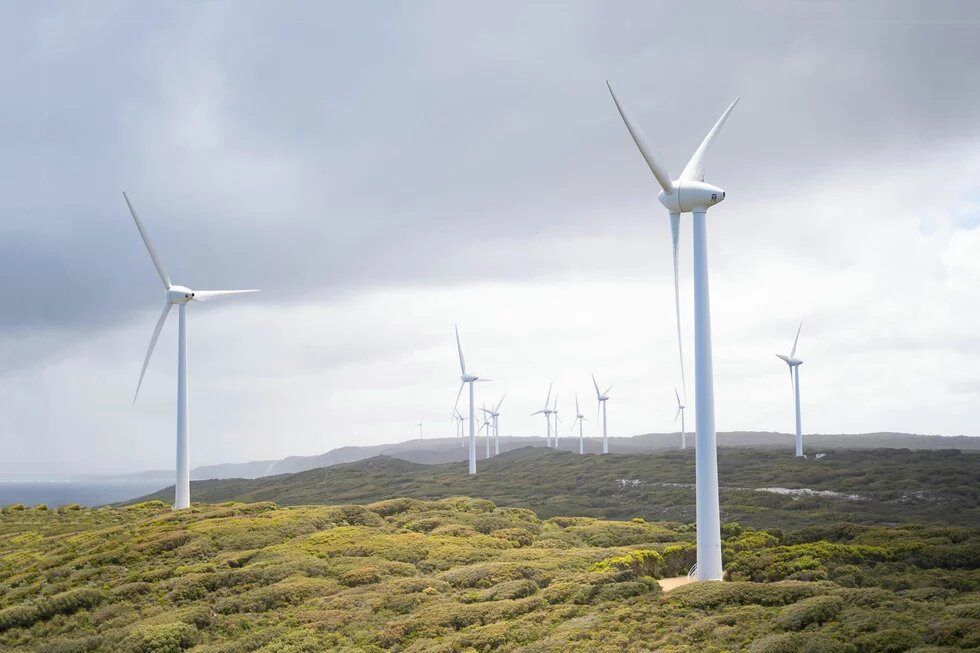China’s industrial strategy follows a playbook of state-backed scaling, limited consolidation, and outbound expansion. To stay competitive, secure supply chains, and advance decarbonization, the EU should adopt a sector-specific approach to clean tech.

This article is part of a series on “EU-China relations: Bound by Clean Tech or Divided by it?”. The articles reflect the opinions of their respective authors and should be read in the context of this series.
As geopolitical tensions rise and global alliances shift, economic security, along with security, and defence are moving to the center of EU policymaking. But as these priorities gain weight, climate goals risk being sidelined, potentially reshaping Europe’s clean tech sector. The EU now faces a delicate task: advancing decarbonization, safeguarding industrial competitiveness, and strengthening economic and security resilience without allowing any one priority to eclipse the others.
The EU: From Early Clean Tech Leadership to Strategic Vulnerability
Once a pioneer in clean technology, Europe accounted for nearly 27 percent of global climate tech patents filed between 2017 and 2021 — ahead of innovation powerhouses such as Japan (21 percent), United States (20 percent), and China (15 percent). But while European firms led in early innovation, China has rapidly outscaled them. By 2022, it had overtaken Europe in clean energy patent filings, marking a decisive shift in global technological momentum. Building on its earlier dominance in solar and wind, China has massively expanded its exports of lithium-ion batteries and electric vehicles, cementing its position as the global powerhouse of clean tech manufacturing.
China dominates the clean tech value chain.
Despite flagship initiatives such as the Green Deal Industrial Plan, the EU still lacks the scale of funding needed to maintain global competitiveness. Furthermore, China dominates the clean tech value chain - from mineral processing to component manufacturing and assembly. Its recent export controls on rare earths pose significant risks for Europe’s clean tech industries, particularly in electric vehicles and wind turbines. China’s dominance across the clean tech value chain gives it considerable leverage over Europe’s industrial base and energy transition.
China’s Strategic Playbook: Subsidies, Scale, and Expansion
China’s clean tech rise is built on a long-term industrial strategy that prioritizes domestic capacity and technological self-reliance. Guided by policies such as, the 12th Five-Year-Plan, Made in China 2025, the Dual Circulation, and sector-specific roadmaps, Beijing has systematically expanded its role across the clean energy ecosystem.
The pattern is clear. First, subsidies flow into strategically selected industries. Second, private actors enter en masse, filing patents and competing aggressively. Third, weaker firms exit as support is withdrawn. Finally, the strongest players consolidate and expand overseas, capturing global market share. Since 2022, these dynamics have translated into a sharp rise in green manufacturing investment abroad.
This playbook has turned China into the world’s largest and most dynamic market for electric vehicles and other clean technologies. Over the past decade, the country has built self-sufficient production networks - dominating everything from mineral refining and manufacturing to final assembly and exports. Its scale advantage has driven down costs and accelerated innovation, reshaping the global clean tech landscape. But the same model that powered this rise is now revealing structural strain, as rapid expansion increasingly clashes with underlying economic realities.
China’s Competitive Edge and Its Fault Lines
Below China’s dominance lies an increasingly fragile foundation. Persistent overcapacity, fierce price competition, and growing financial pressures in a debt-fueled system are creating structural vulnerabilities. In the automotive sector, for example, capacity utilization has hovered around 72 percent since 2021 - well below optimal levels - revealing deep imbalances beneath the surface of rapid growth.
This dynamic has created a polarized market. A handful of leading firms are consolidating and becoming global champions, while many weaker players are pushed to the margins or forced out. Overcapacity lets the most competitive producers flood global markets with cheap electric vehicles, strengthening China’s export position and cost advantage. But it also erodes profit margins, fuels inefficiencies, and risks locking the sector into a low-margin, high-risk growth cycle.
China’s overcapacity is both the foundation of its global strength and a potential source of instability.
For the European Union, this is not an abstract problem. Chinese overcapacity translates into fiercer competition, faster price declines, and shrinking space for European firms to compete on cost. It also forces policymakers to balance protecting domestic industries with staying open to global trade. In short, China’s overcapacity is both the foundation of its global strength and a potential source of instability - and it poses a growing strategic challenge for Europe.
Conclusion: Competing Under Asymmetry
Clean tech has become both a bridge and a fault line in EU-China relations. China’s scale and cost advantages accelerate the energy transition, lowering prices and speeding deployment of critical technologies. At the same time, this dominance deepens Europe’s strategic dependencies just as economic security moves to the center of EU policymaking. China’s recent rare earth export controls show that Beijing is willing to use these dependencies as leverage, making clean tech a strategic issue as much as an economic one.
China’s scale is a double-edged sword. It can accelerate global decarbonization and make clean energy more affordable for the Global South. But it also concentrates industrial power, exposing Europe to dependency risks in areas vital to its green transition and economic resilience.
Europe should adopt a sector-specific approach to clean tech.
Whether clean tech binds or divides the EU and China will depend on how Europe responds. A purely defensive stance risks isolation, uncritical openness risks dependency. A strategic middle path-combining targeted trade - defense measures, already applied by the EU for example on EVs, with promoting scaling, innovation, and cooperation with reliable partners - offers the best chance to secure both green and security goals.
Strategic Positioning in a Global Clean Tech Race
Europe should adopt a sector-specific approach to clean tech. In solar panels, where 95 percent of imports come from China, diversifying supply would be a challenge, but security concerns around inverters and system control can be addressed through robust technical protocols. In lithium-ion batteries, risks linked to connected vehicles can be contained by ensuring that battery management systems are sourced from trusted suppliers.
Where Europe still leads, the challenge is not just to innovate but to compete at scale. To defend its technological edge, Europe will need to maintain its position in emerging areas like biotech and to leapfrog in advanced energy tech, scale up industrial deployment quickly.
Chinese market access should be conditioned on structured joint ventures with European firms to enable technology transfer and strengthen upstream capacity, preserving Europe’s long-term competitiveness in key sectors.
Ultimately, clean tech will remain a shared space of interdependence - one that can accelerate decarbonization but reflects growing power asymmetries. How the EU manages this tension will determine whether clean tech becomes a binding force of cooperation or a fault line of rivalry with China.

